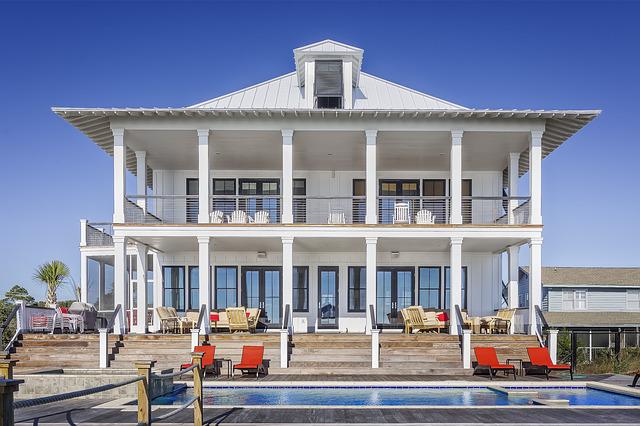
The Beauty of Australian Architecture: The Queenslander
Australian architecture is a vibrant mixture of versatile styles originating from the four corners of the globe. Indigenous architecture intertwines with British, Italian and American cultures. Every city we visit out here has its own beautiful and unique outlook. However, there is one typically Australian architecture style you can only find in Oz – The Queenslander or The Queensland House. Born in the north-western state of Queensland, it was forged in the attempts of locals to deal with the hot and wet climate.
However, the Queenslander homes are more than just a type of housing. They are a tradition. Tradition of timber, tradition of lifestyle…
“The lifestyle in the Queenslander house was different to that of Britain, Europe and southern Australian states,” Professor Peter Skinner, Queensland President of the Australian Institute of Architects, claims. “We lived with the doors and windows open. We relaxed, entertained and chatted to the neighbours on the street from the veranda.”

Image credit: Wikimedia Commons
So, What Does the Queenslander House Look Like?
The Queenslander has survived over two centuries of evolution. From the early 1800’s rough timber huts through two-storey bungalows in the 1930’s to their contemporary interpretation – the Eco-Friendly Timber Housing. No matter how much the iconic building style has changed over the years, its signature elements never did. You can always recognise a Queenslander by its:
- timber construction with steep-pitched tin roof;
- large veranda/ verandas;
- lavish garden with tropical plants and tall trees near the main construction;
- intricate decorative features which aim to ventilate the interior or screen the sun;
- timber stumps to elevate the construction;
Timeless Design Elements
Today, Queenslander style is not limited to its native state, it’s spread Australia-wide. While some of its features have been replaced and others – updated, two signature details are never going to change. Dominated by super-hot sub-tropical summer and torrential rain, vast verandas and high-set stumps are the Queensland house most enduring architectural elements.

Image credit: Wikimedia Commons
Why Big Verandas?
Even back in the day when the first Queenslander was built, the veranda held special place in the building’s design. It was the largest area of the house – sometimes it took up more than 50% of the living space of the dwelling. Especially in the cases where the homes were small. Most living took place under the cool shades of the veranda. So, in its own way, the veranda has always been essential to the lifestyle of the Queensland population.
Verandas, however, have undergone an evolution of their own. Once the perfect means to escape summer heat, during the early 1900’s they were enclosed to provide bigger living space in a depressed economy. Nowadays, as people strive to include nature in the building design as much as possible, verandas have been replaced by decks. Natural wooden decks or even tiled ones are often even bigger than the interior living area itself.
Why Stumps?
On the other hand, the Queenslander is also recognisable high-rise stump foundation. To outlanders it may seem like yet-another quirky design decision but it’s far more complicated than that. Originally made from timber and later replaced with concrete or even steel, the stumps which lift the building above ground level have a dual purpose. On the one hand, they allow air to flow freely beneath the construction, thus enabling better ventilation during summer heats. On the other hand, the caps and plates atop the stumps prevent any contacts with termites and other pests. Back in the day, this design also saved the builders significant expenses on earthmoving works for slopping or uneven ground.
Thanks to their one-of-a-kind high-raise design, Queenslanders can easily be raised, lowered, rotated or even entirely relocated. However, it was probably the increased mobility of these constructions that almost led to their undoing. During the late 1900’s many of the astonishing buildings were wither relocated or demolished to make way for progress, skyscrapers and modern housing. Local governments, however, quickly realised the danger of extinction hanging over the Queenslander and quickly adopted a conservation policy. Probably, this is the main reason you will find so many Queenslander-style homes all over the country.
The Queenslander & Other Architectural Styles
In many ways the Queenslander is not a separate housing style. It’s more an adaptation which was added to the epoch-appropriate styles. From Victorian through Federation to Contemporary styles, you can find a Queenslander showing off the best of their signature looks. At the same time, each and every Queenslander has its own character and individuality. The iconic buildings constructed in the only typical Australian style, represent more than just an architectural movement. They are a symbol of the lifestyle and family values locals have carried from the early settlers till nowadays.
- Five Changes to Apply to Your House Before Selling It - June 28, 2022
- How to clean and organise your summer house - January 27, 2022
- How Often Should Pest Control Visit Your Home? - January 13, 2022





